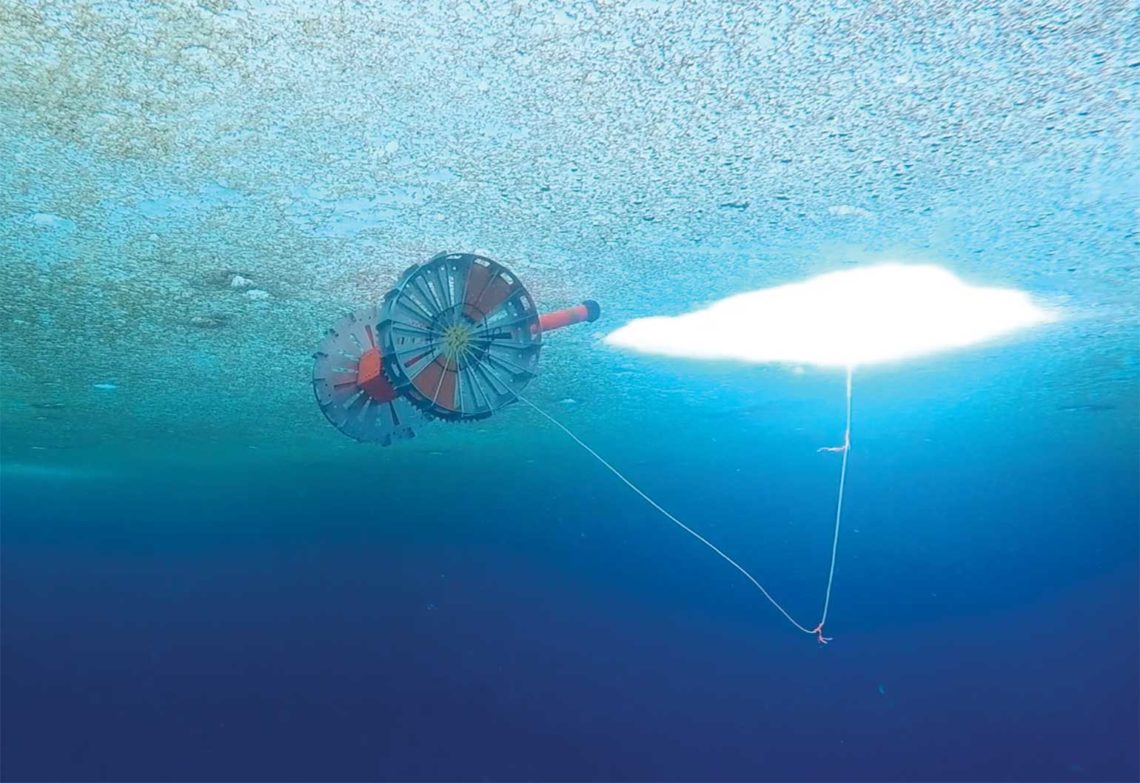This upside-down rover has been designed to search for life on distant ocean worlds.
When University of Western Australia mechatronic engineer Dr Dan Arthur and his NASA collaborators tested their aquatic rover in Antarctica over summer, the extreme conditions were among the harshest on the planet.
The Buoyant Rover for Under-Ice Exploration, or BRUIE, had to be lowered through freezing water to the underside of the ice sheet at Australia’s Casey Station.
There, the two-wheeled vehicle drove autonomously along the underside of the ice crust.
“Dr Andy Klesh, the Lead Engineer, calls it ‘mowing the lawn’,” Arthur said.
“BRUIE was able to autonomously map a large square area of ice-water interface.”
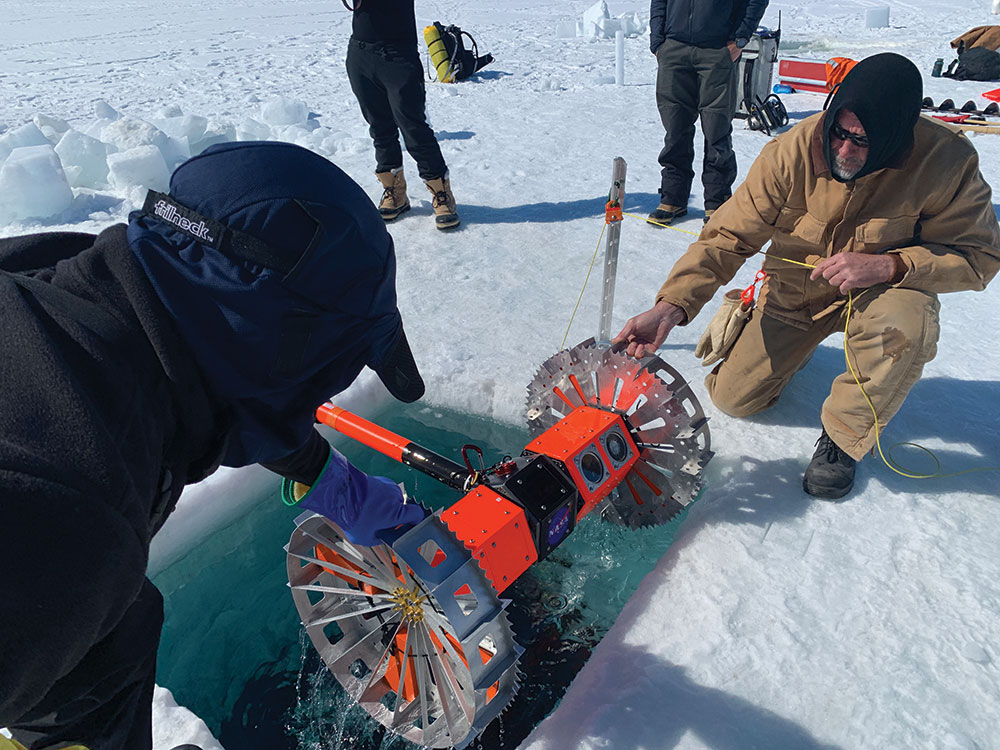
Antarctica is one of the most hostile environments on Earth. But it’s nothing compared to what the autonomous vehicle is designed for: searching for life on ocean moons and other interplanetary objects.
Among them is Europa, an icy moon of Jupiter where midday temperatures peak at about minus 140 degrees Celsius.
Europa — particularly the parts of it where its water content meets ice — is widely considered one of our best chances at finding extra-terrestrial life within our solar system.
Mining expertise
NASA technologist and aerospace engineer Dr Dan Berisford helped build the rover, and tested it in Antarctica alongside Arthur, Klesh and Jet Propulsion Laboratory Deputy Chief Scientist for Solar System Exploration Dr Kevin Hand.
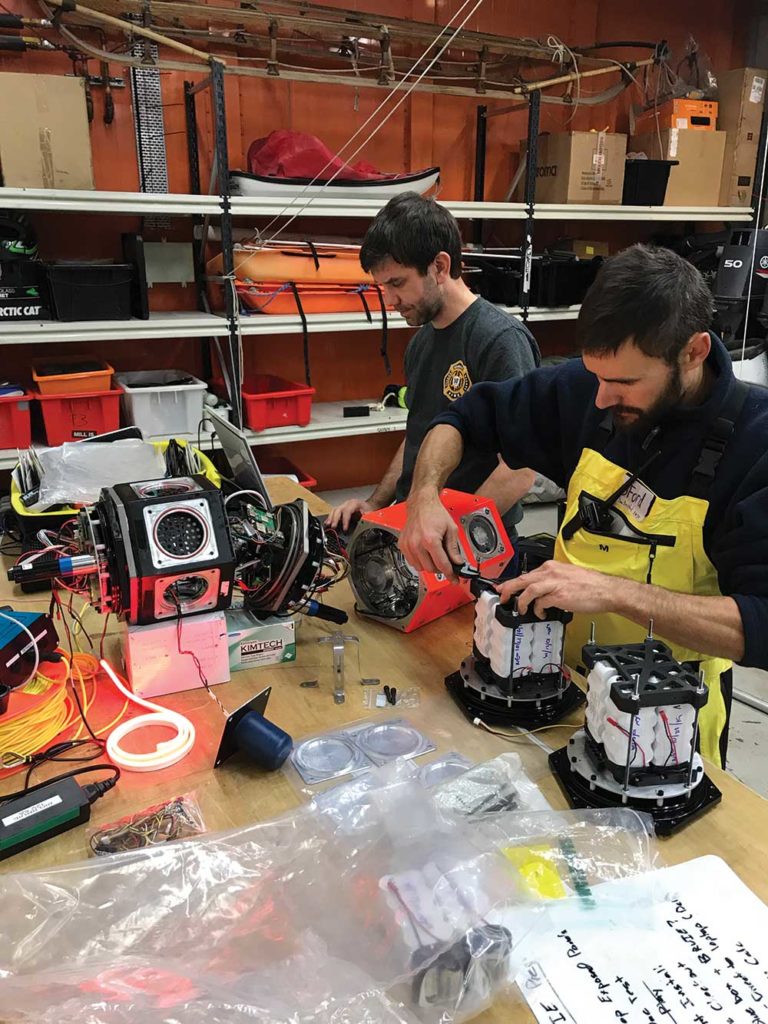
Berisford said that one of the biggest challenges was making the rover waterproof.
“We have a lot of moving parts … a lot of dynamic seals,” he said.
“We’ve taken quite a bit of what we’ve learned from the submarine community, and also the underwater mining community.”
To get to Europa’s ice-water interface, BRUIE first will need to bury through an ice shell that scientists believe is 15 to 25 km thick.
This was another area for which NASA turned to mining experts — including Arthur, whose knowledge comes from his full-time position of Engineering Manager with Rio Tinto.
“The mining industry does a lot of drilling, and they have a lot of expertise and technology in that field,” Berisford said.
He said that his best guess for how they could get through Europa’s thick ice is to use a melt probe.
“Basically, you use some hot, radioactive material to provide a heat source, and you slowly melt your way through that whole crust,” Berisford said.
“It might take a year. But very low power is required.”
From Mars to the Pilbara
Arthur, an ex-NASA engineer himself, previously worked on Mars rovers.
But in his current role at Rio Tinto, he is responsible for projects ranging from mine construction to next-generation autonomous vehicles.
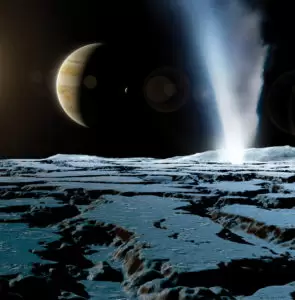
Arthur said he got involved in BRUIE after being invited to a week-long workshop at the Keck Institute for Space Studies in California.
The event brought a range of academics and industry experts together to determine a way to access the underside of Europa’s ice.
After the workshop, Arthur engaged with the Australian Antarctic Division (AAD) and wrote a proposal that won the team a place in the 2019 Australian Antarctic Program.
One of the things the team has been experimenting with is different ways to rescue BRUIE if it gets stuck roving the underside of the ice.
“We put thrusters on it, so if it gets stuck, we can just give it a quick thrust down into the depths and pop back somewhere else,” Berisford said.
“We can control the buoyancy, so we can make it heavy for a few seconds [and make it] drop down into the free water.
“Or we can change the shape of the wheels, so we can make the wheels contract and expand to push itself off of an obstacle.”
As well as exploring the outer space capabilities of BRUIE, the researchers have been using the platform on Earth to perform oceanographic research.
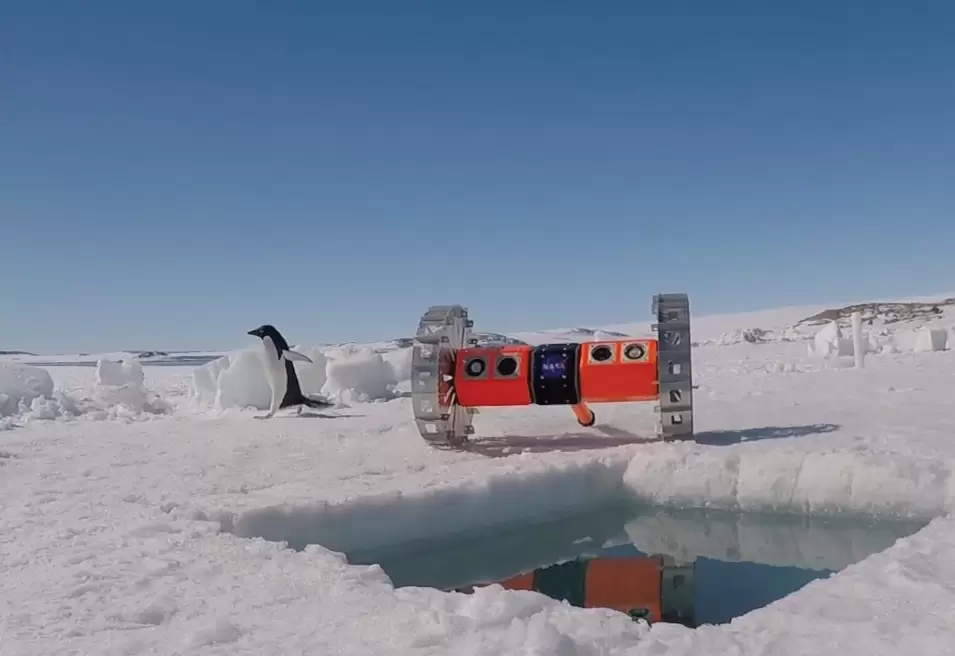
A buoyant rover
Another big challenge on Europa will be the finite amount of energy provided by BRUIE’s batteries.
It’s one of the reasons why the team opted for a buoyant rover, rather than a traditional “free-swimming” or submarine-like vehicle, Berisford said.
“A sub requires continual power to maintain position using thrusters to fight drifting with ocean currents,” he said.
“The rover is essentially passively anchored to the ice surface, and so can stay put for long periods of time with no power input.”
Roving the underside of the ice also puts BRUIE in the perfect position to study the ice-water interface.
On Earth, such interfaces are often rich with life because of a concentration of nutrients that are excluded from the water during the freezing process. The physical surface also provides a substrate to which algae and other organisms might attach.
“Free-swimming vehicles disturb the ice-water interface, destroying delicate algae and thin nutrient gradients that we want to study, because of their thrusters creating turbulence,” Berisford said.
“BRUIE is very quiet and slow-moving so as not to disturb the environment which we are trying to measure.”
On the path to Europa
In the mid-2020s, NASA expects to launch the first dedicated and detailed study of an ocean world beyond Earth, Europa Clipper.
Arthur said this could be followed by a subsequent mission that aims to land on Europa’s surface.
This is where a future version of BRUIE could be deployed to begin the search for life.
Using current rocket technology, the journey to Europa would take six to eight years. After tunnelling through the ice, BRUIE’s actual scientific mission would probably only last a few weeks, Berisford said.
But, he said, getting to that point represents a lifetime of work by a huge team of people.
If Antarctic testing is anything to go by, the mission appears to be on track.
Three mission challenges
1. Limited energy budget
Europa is too far from the Sun for solar panels to be effective, and they will be useless kilometres below the ice anyway. The mission will likely rely on nuclear power sources, low-power thermal generators or batteries. Engineers will need to maximise BRUIE’s scientific return from the limited energy available.
2. High pressure
If the ice on Europa is 30 km thick, the pressure will be akin to the deepest part of the ocean on Earth, says Dr Dan Berisford. Designing for this adds to the weight and complexity of the rover, and leaves less space for batteries and scientific instruments.
3. Choosing the right instruments
Europa’s environment is almost completely unknown. BRUIE will look for things that are indicative of life on Earth — such as nutrients, oxygen and amino acids. But scientists will have to guess the sensitivity of the instruments.

